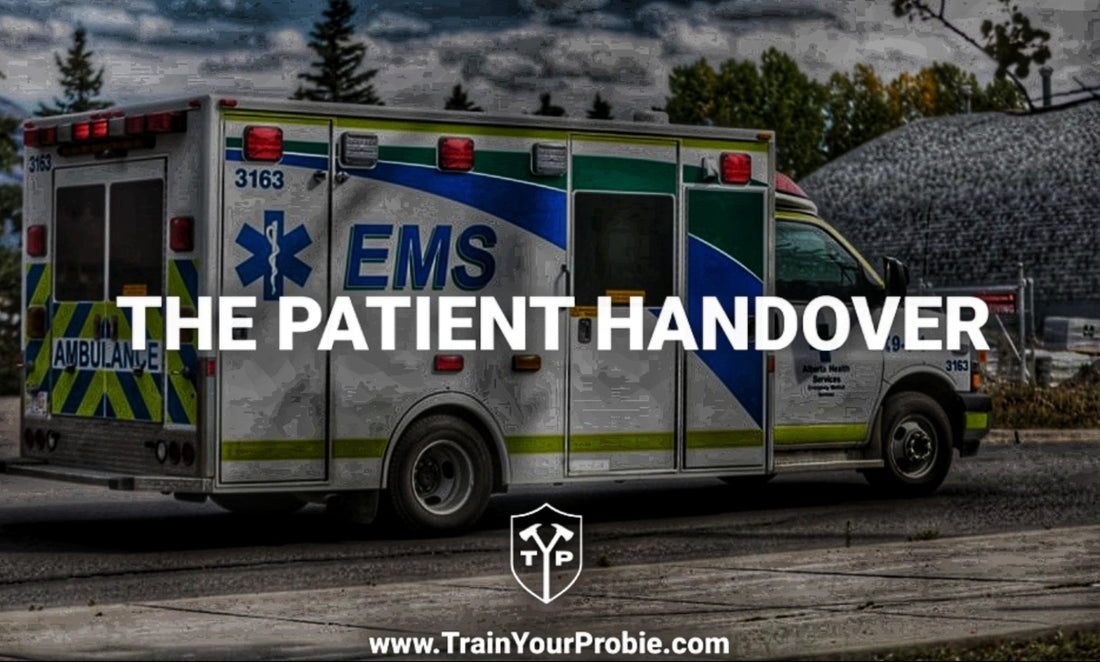
The Patient Handover
There are many roles and responsibilities in the medical space, and we work in different environments with varying scopes of practice. However, there are many common skills we share. Whether you are an Advanced First Aider with the Fire Department or a Respiratory Therapist at a large hospital you should understand how to use a “head tilt/chin lift” as a basic airway maneuver and a
Firefighter or RT would probably perform it in a similar fashion. It is a basic skill and basic skills help save lives when we do them well. One of those “basic” things we sometimes don’t do all that well is delivering or receiving a patient handover. Everyone who works in medicine has assumed care of a patient after being given a poor handover or been totally ignored while sharing a good one. It is frustrating to prepare and deliver an organized, succinct handover and the person receiving it didn’t even bother listening for the patient’s name and age.
The first thing we need to do to improve our handovers is to be humble. The handover is not about us. It is about our patient. A smooth transition from one part of the medical pipeline to the next is good patient care, just like good airway procedures. This handover becomes even more important the
more serious the patients’ injuries where rapid assessment and transport are critical, in mass casualty situations or if they are packaged to protect from hypothermia or in preparation for flight.
Like so many other aspects of medicine there are a couple mnemonics out there to help us when the pressure is on. Handovers are easy when our patient is relatively healthy, and we are under little duress. It’s the handovers in the ER or to the flight crew for our sickest patients where we need to be our best and could use a crutch. Western militaries have long used the ATMIST mnemonic while ACHAT is common in the pre-hospital setting. Both ensure that pertinent information is passed to the receiving party in a quick and organized manner.
ATMIST is arranged as:
1. Age
2. Time of injury
3. Mechanism of injury
4. Injuries
5. Vital Signs
6. Treatments
While ACHAT is:
1. Age
2. Chief complaint
3. History of pertinent illness
4. Assessment
5. Treatment
Although some of the words are different, the details are very similar. Let’s break down the information that must be shared.
1. Patients age.
2. What happened and why are we here with an approximate time frame.
3. What we have found on our primary and secondary assessments. One way we can stay on track communicating our patients’ injuries without missing any is to use a head-to-toe approach. We can look at our patient and describe each injury as we work our way from top to bottom. This approach also works for our treatments.
4. Our last set of vital signs including level of responsiveness, airway status, respiratory rate, ETCO2, SPO2, heart rate, blood pressure (or palpable pulses), BGL, temperature etc. and any significant changes.
5. Treatments we have done. As I mentioned above, a head-to-toe approach can keep us on track ensuring we miss nothing. Communicate any interventions from top to bottom by simply looking at your patient while handing over then summarizing any drugs given at the end.
6. It never hurts to end by asking if the receiving provider has any questions.
When we give a good handover, it instills confidence that we know what we are doing, and that we have completed a thorough assessment and provided all the treatments our patient needs. This will help decrease time on scene, reduce redundant history taking, which is frustrating for many patients,
and improves relationships all along the medical pipeline.
Written By:
Steve Ferry
Steve is currently a full time Firefighter. Before becoming a Firefighter he served several years in the Special Forces as a Medic. Steve continues to use his previous medical experience to train Firefighters and First Responders in Emergency Medicine.
